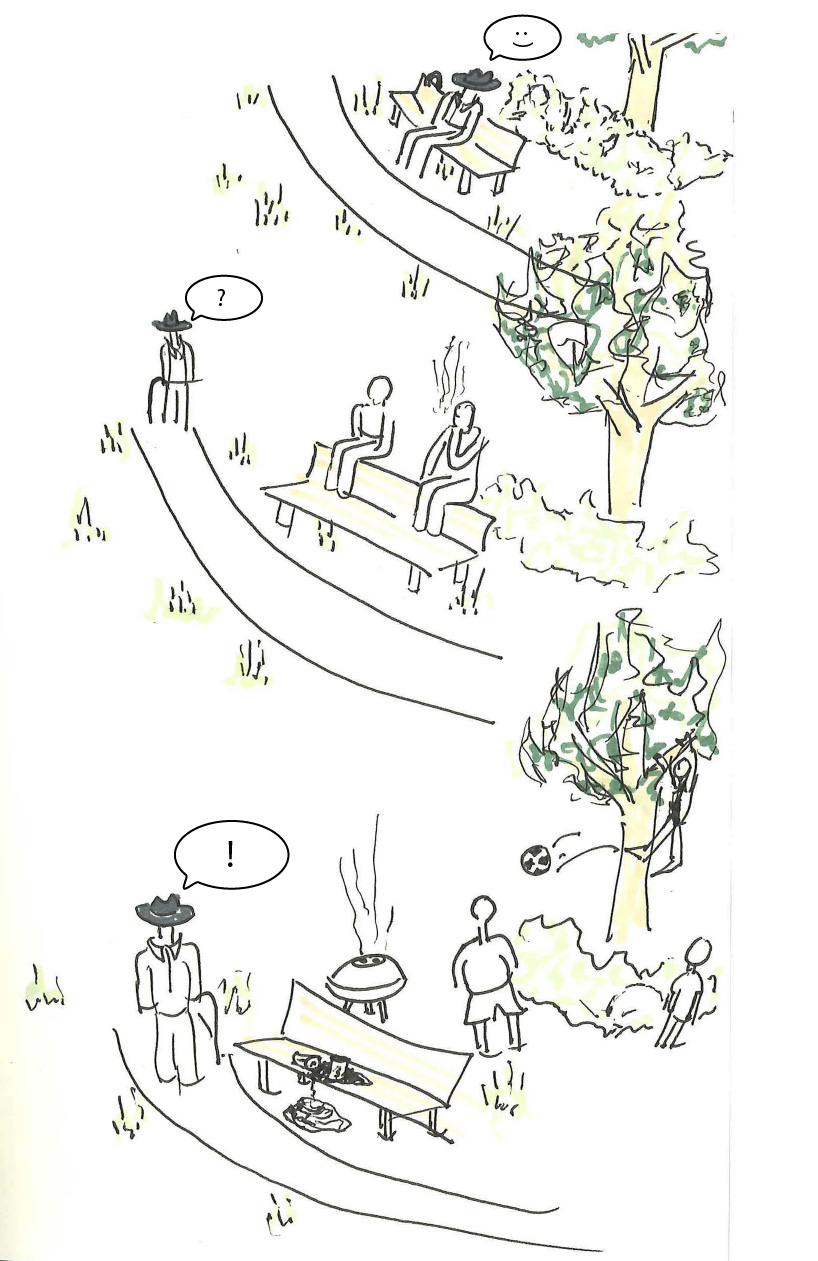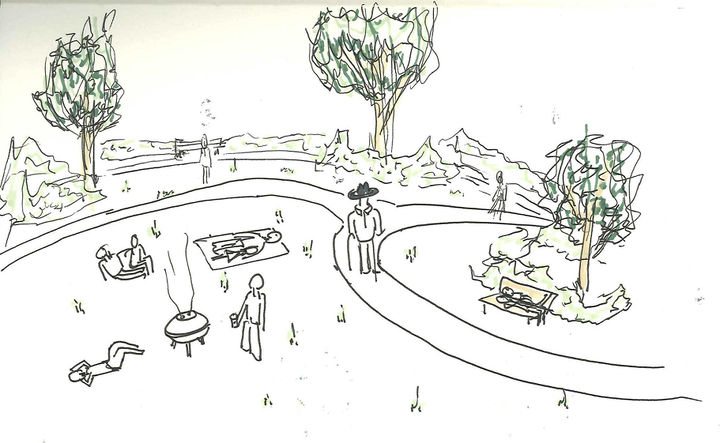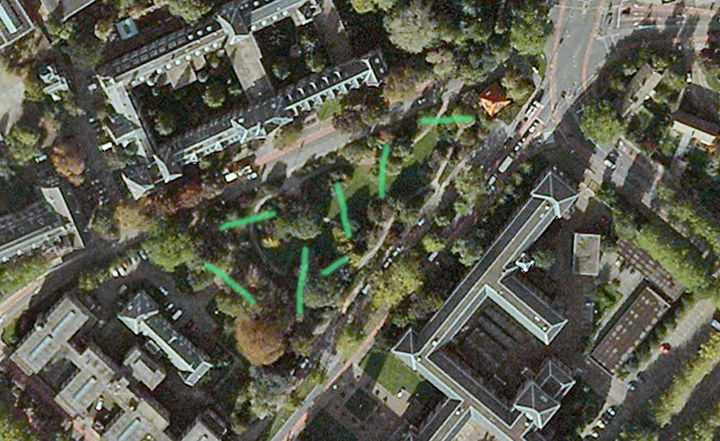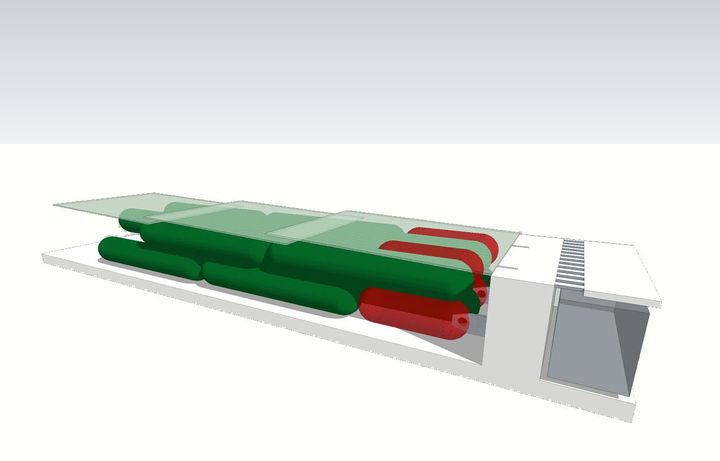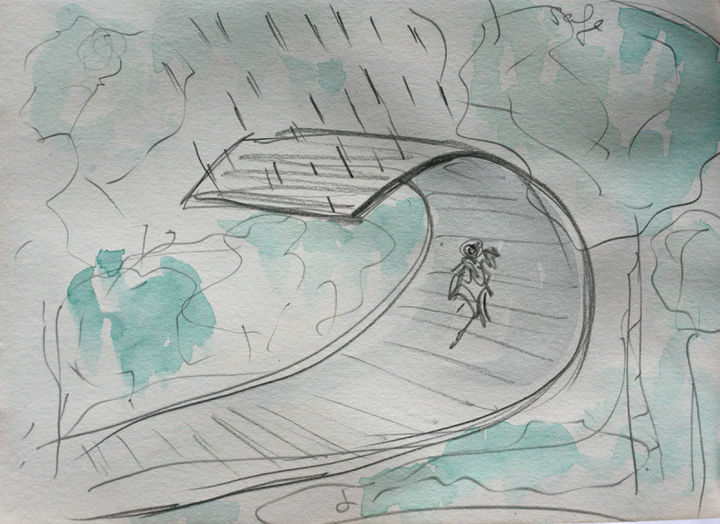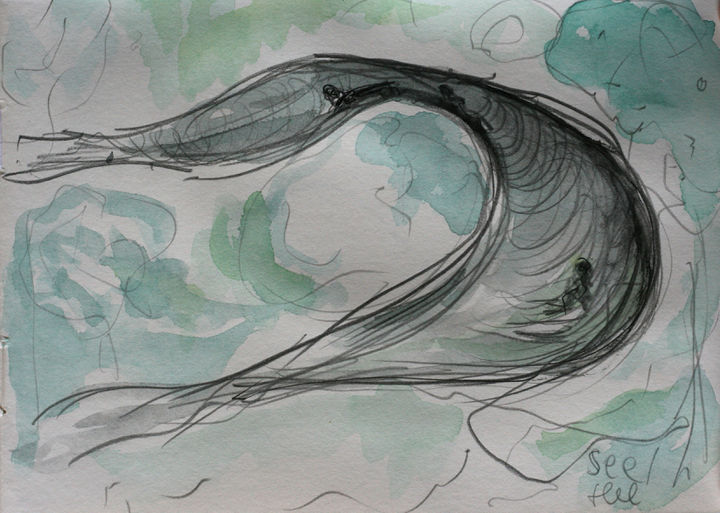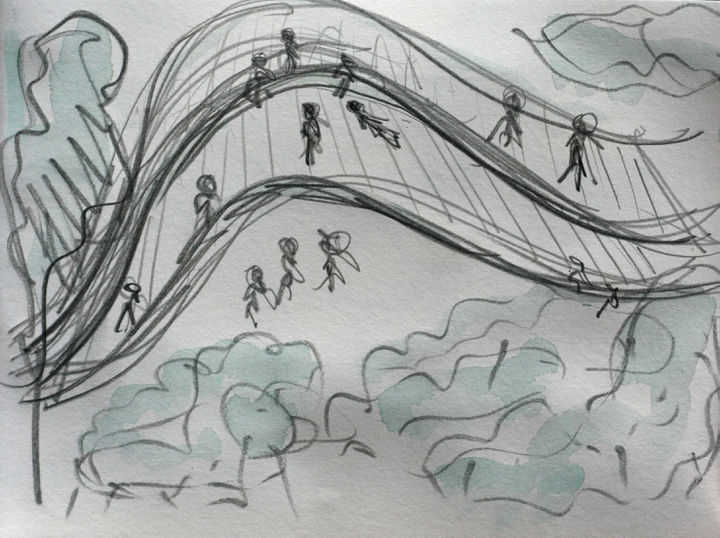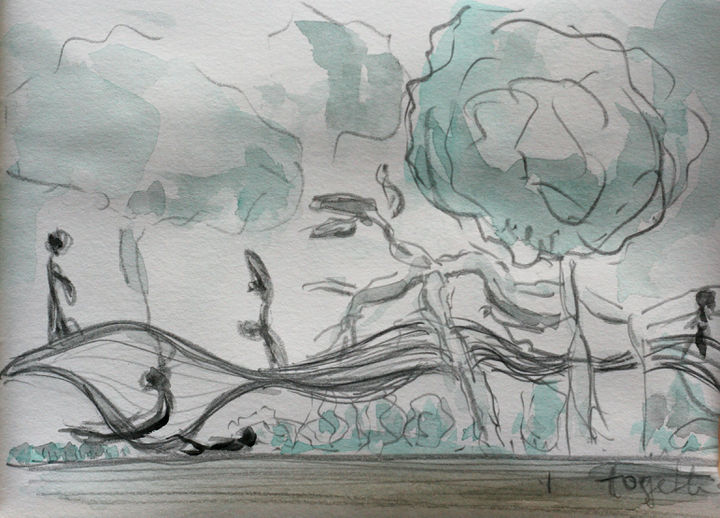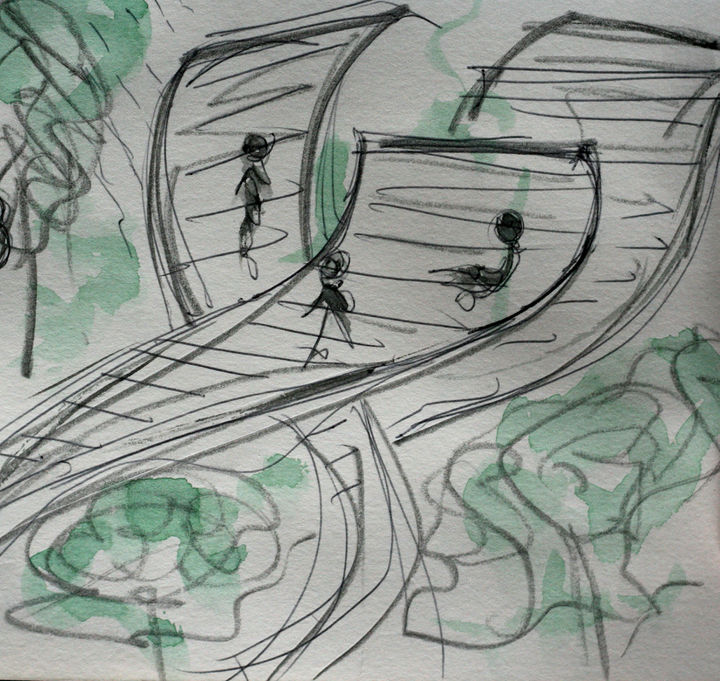atom06:12-9-11
| (4 intermediate revisions by one user not shown) | |||
| Line 2: | Line 2: | ||
Status Quo | Status Quo | ||
| − | The site, as it exists now, contains four basic types of space: paths, lawns, bushes and entrances. Existing since 1915, it is clear that the site was designed in a manner as to let the nature take over. The effect of this design is a powerful one. Visitors get a sense of wilderness when walking the paths; on a sunny day butterflies abound, and sweet odours fill the air. Such a space is an asset to the surrounding community. The bushes act as a buffer, blocking out sounds of the passing cars, busses and scooters. They also serve as a barrier, blocking out all sorts of possible activities, potentially informative or intimate in nature. Who knows how this inaccessible space could better interact with the surrounding atmosphere? At the moment, the site succeeds in being a private, closed and sometimes hidden locale. Such an environment encapsulates a certain intimacy, delicate in nature, that depends on a maximum of only a very few users in the site at any moment. | + | The de Vries van Heystplantsoen site, as it exists now, contains four basic types of space: paths, lawns, bushes and entrances. Existing since 1915, it is clear that the site was designed in a manner as to let the nature take over. The effect of this design is a powerful one. Visitors get a sense of wilderness when walking the paths; on a sunny day butterflies abound, and sweet odours fill the air. Such a space is an asset to the surrounding community. The bushes act as a buffer, blocking out sounds of the passing cars, busses and scooters. They also serve as a barrier, blocking out all sorts of possible activities, potentially informative or intimate in nature. Who knows how this inaccessible space could better interact with the surrounding atmosphere? At the moment, the site succeeds in being a private, closed and sometimes hidden locale. Such an environment encapsulates a certain intimacy, delicate in nature, that depends on a maximum of only a very few users in the site at any moment. |
Exploration | Exploration | ||
One of our connections during this exploration was in the form of an old man, sitting on a bench and relaxing. | One of our connections during this exploration was in the form of an old man, sitting on a bench and relaxing. | ||
| Line 10: | Line 10: | ||
change is on the way. | change is on the way. | ||
Reaction | Reaction | ||
| − | + | In a historic sense, the evolution of our site is closely tied with the creation of the TU Delft Botanical Gardens. | |
| − | + | Separated only by one year in their founding, these two locations are linked in their functions and in their futures. The municipality of Delft has plans to improve accessibility to the site while maintaining the characteristics that the site has come to represent. The park functions as an alternative option for visitors unwilling to pay to enter the TU Delft Botanical Gardens. In this way, the two sites are linked, while the park serves as a bridge, connecting the surrounding environs to the Botanical Gardens. | |
| − | + | While close in function, the method of discovery and organization of both sites are actually quite different. No placards or plant names adorn the paths of the de Vries van Heystplantsoen site, unlike the neighboring gardens. This ambiguity allows the flora to be experienced in a more experiential manner, as opposed to an educational manner. The 'mystery' that accompanies a personal discovery of a place is much more intriguing for our conceptual aims. | |
| − | + | ||
| − | + | Please find below some explorations of how we have attempted to describe the mystery of the site. | |
| − | + | ||
| − | + | ||
| − | + | ||
| − | The | + | |
| − | + | ||
| − | + | ||
| − | Please find below some explorations of how we have attempted to describe the | + | |
The watercolors that follow describe potential uses of space, each united with a device of some sort, | The watercolors that follow describe potential uses of space, each united with a device of some sort, | ||
Latest revision as of 16:34, 12 September 2011
Status Quo
The de Vries van Heystplantsoen site, as it exists now, contains four basic types of space: paths, lawns, bushes and entrances. Existing since 1915, it is clear that the site was designed in a manner as to let the nature take over. The effect of this design is a powerful one. Visitors get a sense of wilderness when walking the paths; on a sunny day butterflies abound, and sweet odours fill the air. Such a space is an asset to the surrounding community. The bushes act as a buffer, blocking out sounds of the passing cars, busses and scooters. They also serve as a barrier, blocking out all sorts of possible activities, potentially informative or intimate in nature. Who knows how this inaccessible space could better interact with the surrounding atmosphere? At the moment, the site succeeds in being a private, closed and sometimes hidden locale. Such an environment encapsulates a certain intimacy, delicate in nature, that depends on a maximum of only a very few users in the site at any moment.
Exploration
One of our connections during this exploration was in the form of an old man, sitting on a bench and relaxing. He claimed to have been using the site for a long time; he couldn't remember when he first came to the site. He is happy with the site the way it is currently, and cannot imagine anything which will make the site better. What he does not know is that in the next year, students will take over his precious park, and whether he likes it or not, change is on the way.
Reaction
In a historic sense, the evolution of our site is closely tied with the creation of the TU Delft Botanical Gardens. Separated only by one year in their founding, these two locations are linked in their functions and in their futures. The municipality of Delft has plans to improve accessibility to the site while maintaining the characteristics that the site has come to represent. The park functions as an alternative option for visitors unwilling to pay to enter the TU Delft Botanical Gardens. In this way, the two sites are linked, while the park serves as a bridge, connecting the surrounding environs to the Botanical Gardens. While close in function, the method of discovery and organization of both sites are actually quite different. No placards or plant names adorn the paths of the de Vries van Heystplantsoen site, unlike the neighboring gardens. This ambiguity allows the flora to be experienced in a more experiential manner, as opposed to an educational manner. The 'mystery' that accompanies a personal discovery of a place is much more intriguing for our conceptual aims.
Please find below some explorations of how we have attempted to describe the mystery of the site.
The watercolors that follow describe potential uses of space, each united with a device of some sort,
here represented by an undulating plane that performs various functions based on the needs of users.
